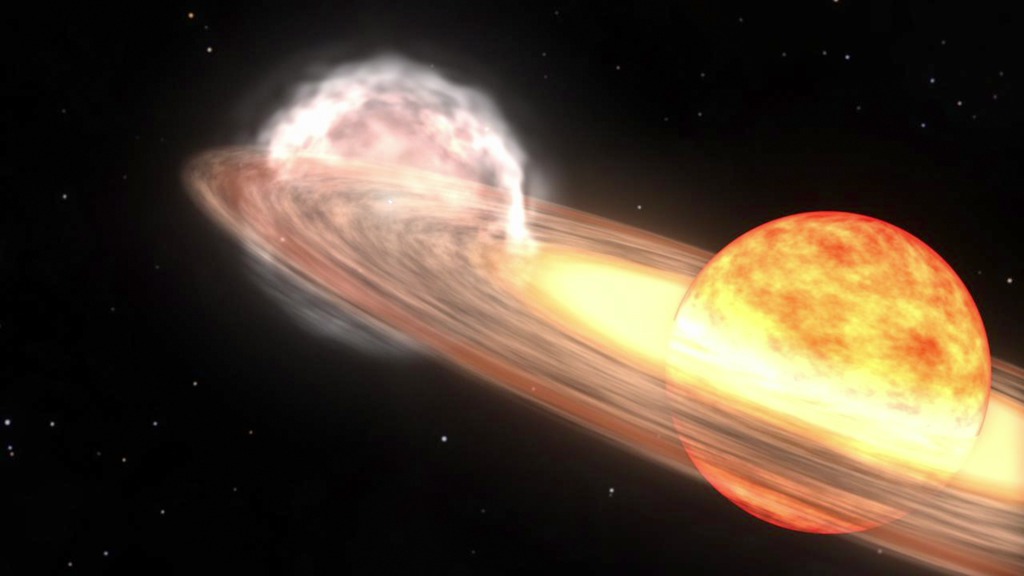Cosmic Blast
A nova is a sudden, short-lived explosion from a compact star not much larger than Earth. The outburst comes from a collapsed star known as a white dwarf, which circles so close to a normal star that a stream of gas flows between them. This gas piles up into a layer on the white dwarf's surface until it reaches a flash point and detonates in a runaway thermonuclear explosion. Astronomers estimate that between 20 and 50 novae occur each year in our galaxy, but despite their power most go undiscovered. NASA’s Fermi Gamma-ray Space Telescope has observed several nearby novae and found that each blast produces gamma rays, the most energetic form of light. Scientists think the gamma rays result from collisions among multiple shock waves that race from the site of the explosion in a rapidly expanding shell of debris. Watch the video to see an animation of a nova eruption.

A stunning amount of energy is unleashed when a star goes nova.
This animation shows a nova outburst from a white dwarf orbiting a red giant star.

The blast from a nova creates a shock wave that can expand at speeds of 7 million mph.

The white dwarf remains intact even though the explosion releases as much energy as our sun emits in 100,000 years.

NASA's Fermi spacecraft has observed many novae since 2010, proving that they usually emit gamma rays.
For More Information
See NASA.gov
Credits
Please give credit for this item to:
NASA's Goddard Space Flight Center
-
Animator
- Walt Feimer (HTSI)
-
Writer
- Francis Reddy (Syneren Technologies)
Release date
This page was originally published on Thursday, September 18, 2014.
This page was last updated on Wednesday, May 3, 2023 at 1:50 PM EDT.
